Looking Into Brandon Nimmo’s Slow Start
Brandon Nimmo broke out for the New York Mets in 2018, emerging as one of their core hitters. He featured an excellent combination of power and plate discipline that led him to a .263/.404/.483 slash line and a 149 wRC+, a mark that ranked among the best in all of baseball. In getting to that point, Nimmo developed a more pull-heavy approach at the plate, which led to more hard contact and ultimately more power. Nimmo also featured a high .351 BABIP in 2018, which most would expect to come back down to a more reasonable number because of his tendency to pull ground balls into a shifted infield.
Very few, however, would have expected Nimmo to struggle like he has to start the 2019 season. To this point, Nimmo has put up a .200/.344/.323 slash line, good for a 93 wRC+ in 161 plate appearances, and injury concerns continue to linger. Nimmo’s struggles are playing a big part in the overall difficulties of the Mets lineup, and coaches have offered suggestions to Nimmo that might snap him out of it:
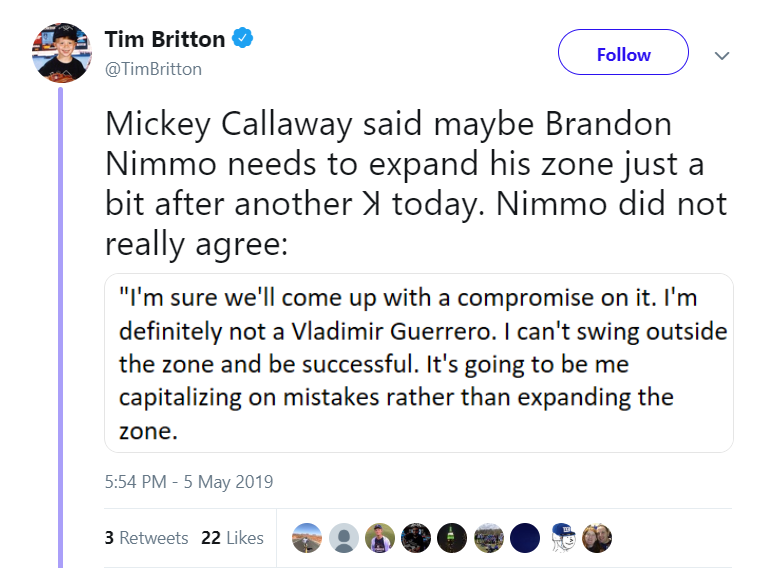
Nimmo disagrees with Callaway, and so do I. Nimmo is one of the more patient hitters in the game, and he likes to wait for a pitch he can do damage with. The problem has been that he isn’t doing damage on those pitches like last year, so I wanted to find out what it is about Nimmo’s profile that could potentially be causing such a slow start.
I first started out by looking at Nimmo’s rate stats. The first thing that jumps out is his increased strikeout rate, which is up from about 26% in 2018 to about 30% in 2019. A very selective hitter, Nimmo will strike out more than average as he waits for his pitch, but this is a significant jump. Going deeper, the more interesting thing is that Nimmo has had a large increase in his swinging strike rate in 2019, despite not swinging the bat very often. Looking at the FanGraphs Plate Discipline leaderboard, you can see that there are only seven qualified hitters that swing the bat less than Nimmo does, and only eighteen hitters who swing the bat less than 40% of the time. Here is a table comparing the average plate discipline stats of those eighteen hitters to Nimmo:

From this table, you can see that Nimmo is way above the average in terms of swinging strike rate and K-rate, and of these low-rate swingers in the game, Nimmo is the only one with a swinging strike rate above 10% while Rhys Hoskins is the only other hitter in this sample with a K-rate over 25%. This makes sense, as Nimmo has been swinging and missing more frequently in 2019, which leads to an increase in strikeouts. But Nimmo is also extreme in that he doesn’t swing the bat that frequently, but when he does swing, he is swinging and missing at a higher than expected rate. To further illustrate this, I imported this data set into R and created a scatterplot showing the swinging strike rates and swing rates of all qualified hitters to show how unusual this is.
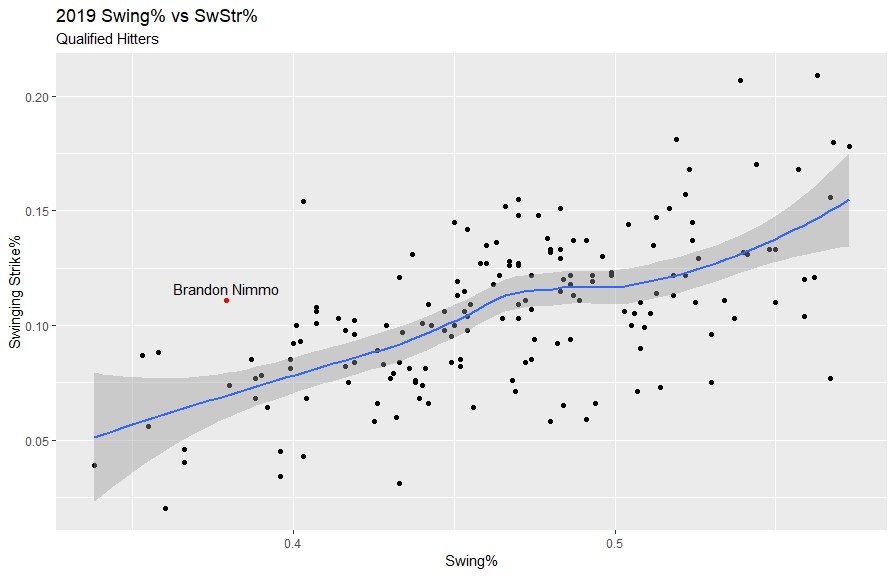
You can see how much Nimmo sticks out here, notably not close to the blue smoothing line on the graph, which shows just how much of an outlier he has been so far in 2019. Nimmo has been an outlier in this department in the past, as he was also one of the least-likely-to-swing hitters in 2018, but he had a swinging strike rate more in line with the rest of the league. Here is the same graph, but this time using 2018 numbers:
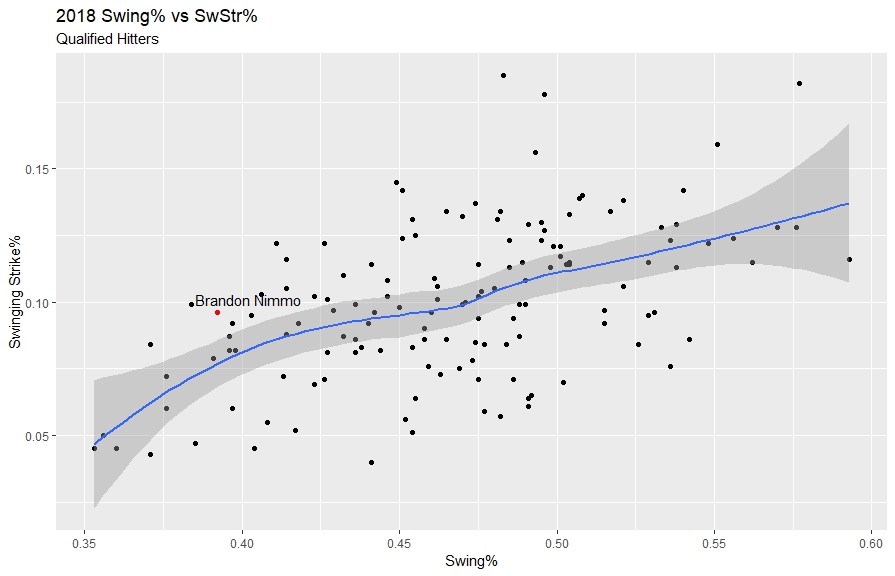
You can see that Nimmo looks like less of an outlier here, and while he is still outside of the smoothing area, it is a lot closer.
The next part of the analysis was to try and find a reason why Nimmo is swinging and missing at a higher rate. My first move was to go to the Statcast data to try and see if he is being pitched to differently or seeing a different variety of pitches. Here are Nimmo’s Statcast numbers from 2019 and 2018 by pitch type:

With no real difference in the percentage of fastballs, breaking balls, or offspeed pitches from 2018 to 2019, the only main takeaways from this table are Nimmo’s very poor performance on breaking pitches and offspeed pitches, along with an increased strikeout and whiff rate on all three pitch groupings. I decided to then look and see if the increased strikeout and whiff rates could be pinned to Nimmo seeing pitches in a different location. I first looked at the locations of pitches he faced in 2018 and compared it to 2019, and courtesy of Statcast, here are heatmaps of those pitches by location, first in 2018:
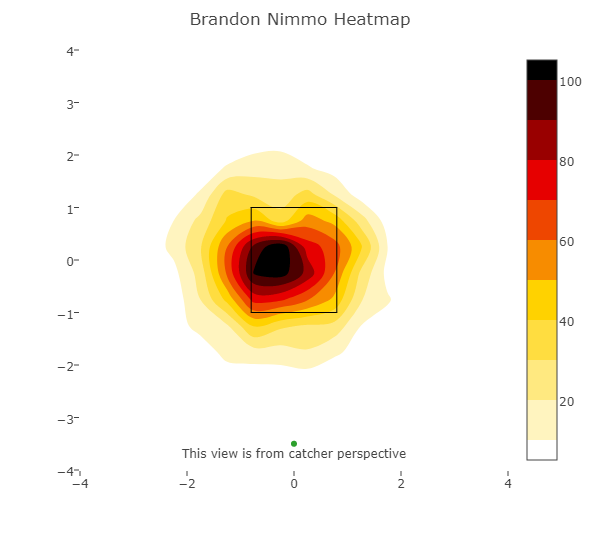
And the same for 2019:
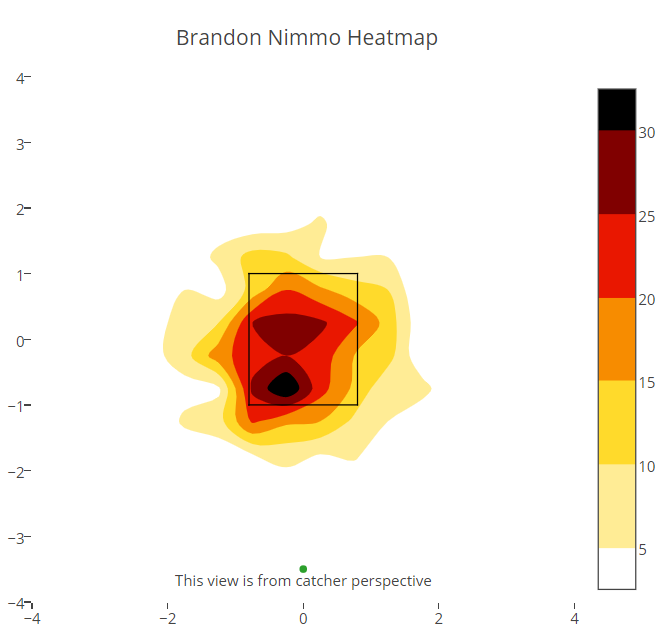
You can see that Nimmo has seen more pitches down and away, but overall, this looks like a pretty typical pitch heatmap for a left-handed hitter and will probably get more typical as the sample gets larger. With location seemingly out of the question, I decided to investigate Nimmo’s zone charts and see where his swing-and-misses are coming from within the strike zone. Look at it for yourself, as you can clearly see which zones give Nimmo the most trouble. The first chart is from 2018 and the second is from 2019:
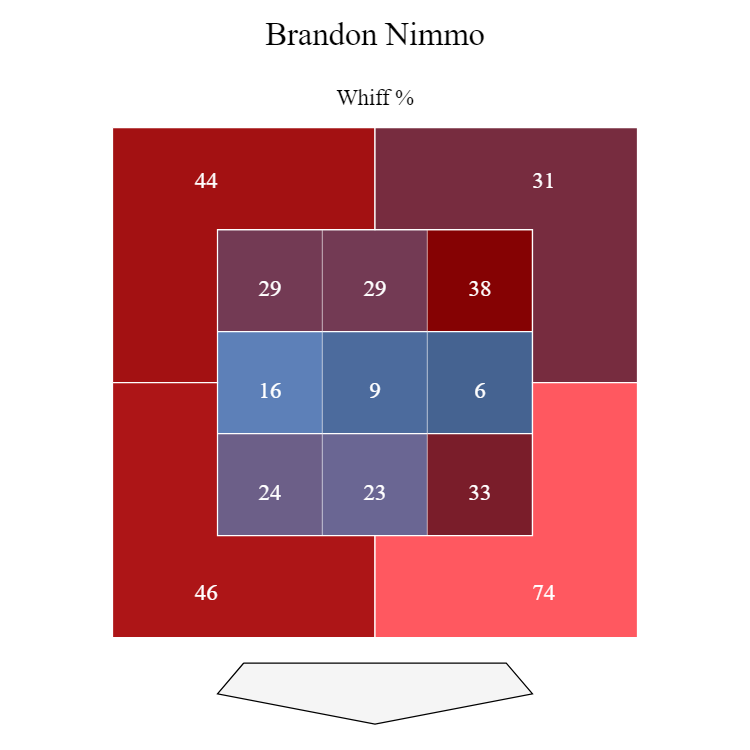
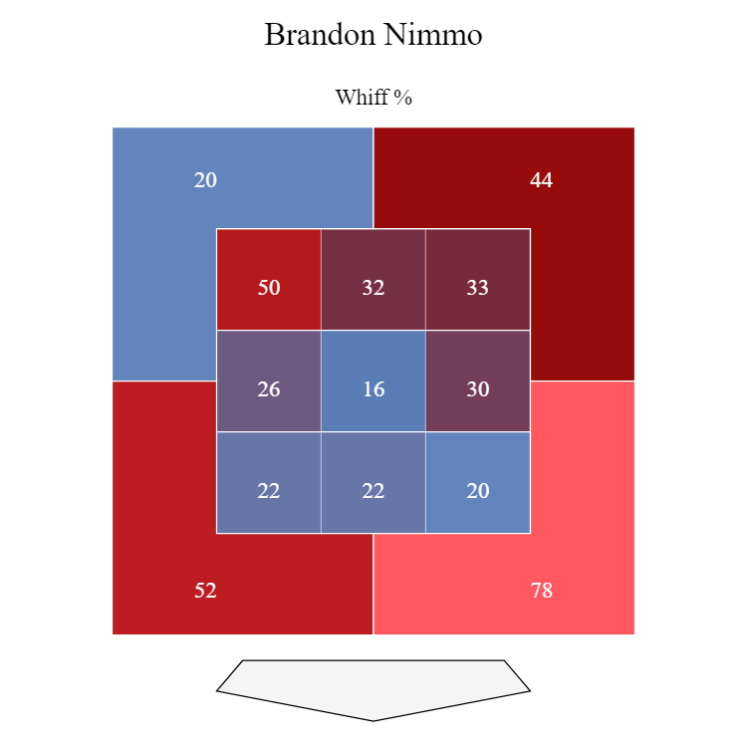
You can clearly see a difference here year-over-year. Nimmo is whiffing a lot more in the upper-third and in the middle-in portions of the strike zone as well as pitches out of the zone up-and-in and low-and-away. Now we have a meaningful difference somewhere that can hopefully explain Nimmo’s early-season struggles. Using the Statcast search tool, I went digging to compare Nimmo’s whiff rates in those zones to other hitters around the league. Statcast numbers each one of these zones, and here is a blank zone chart for reference:
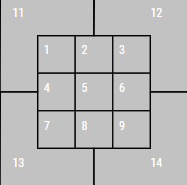
Using that blank chart, we can see that Nimmo seems to have the most trouble in zones 1, 2, 3, 6, 12, and 13. While it does make sense that Nimmo swings and misses more than usual at pitches out of the zone, as most hitters do, the increases in whiffs in the areas inside the zone should be cause for concern. Using the Statcast search tool, I was able to query how Nimmo compares to the rest of the league in whiff rate in these zones. Looking only at batters who have seen a minimum of 500 pitches, the most notable things we can see are that Nimmo has seen pitches in his most troublesome zones at a rate that is among the top 35 in baseball, and his swinging strikes as a percentage of total pitches in those zones are 6.1%, which is well above the league average of 4.7%, and among the worst in the league. Nimmo particularly struggles more than the league in the top third of the zone, swinging and missing at pitches more than the league average, and he has seen pitches in those zones more often than the rest of the league, also ranking in the top 35 in pitches seen in those zones as well.
Nimmo is not seeing more pitches in these zones compared to 2018, as when I ran the same query using those numbers, I saw that he was being pitched in the upper-third of the zone at a similar rate of 13%. A table showing the full results compared to the rest of the league is below, but overall this look into his zone chart helps explain why Nimmo has such an elevated swinging strike rate despite being one of the most infrequent swingers in baseball.
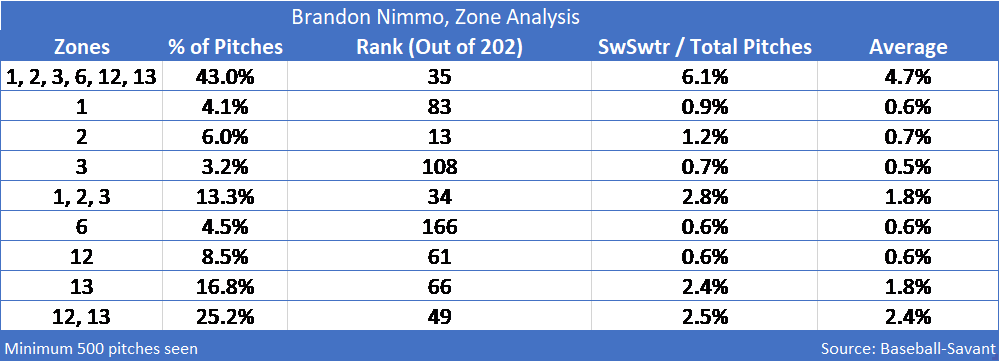
In conclusion, Brandon Nimmo’s struggles to start the season can be traced to an increase in swinging strikes despite him being an infrequent swinger. He has seen an increase in swinging strikes in areas of the strike zone that did not give him trouble like this in the previous season. For Nimmo to improve and get his season back on track, and resume his role as an important part of the Mets lineup, he will have to make sure he is healthy and make more contact on pitches he knows he can do damage with. If Nimmo can’t connect when he gets his pitch, he will certainly continue to struggle.
Outstanding work Matt!
This is great!
This is really well done. It of course raises the question – why would a player suddenly have so much more trouble against pitches in a certain area of the strike zone that he used to handle far better? Mechanical change? Underlying injury? Nimmo got drilled in the hand in very early April and I wonder if this is having a lingering effect that is impacting his ability to get around on pitches up and pitches in.
That would certainly be my leading theory. It’s a little tricky just to pin it on injury because he started off so slow too, predating any injury. However, he was showing very strong signs of getting back to his 2018 levels (had like a 3/4 game stretch where his rates were right in line with 2018) and then he got hit on the hand. Couple that with this neck injury which I have to assume can’t be pleasant for a hitter, and I find it hard to imagine he feels completely comfortable swinging a bat at the moment.